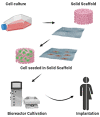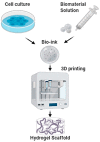Skin Wound Healing Process and New Emerging Technologies for Skin Wound Care and Regeneration
- PMID: 32764269
- PMCID: PMC7463929
- DOI: 10.3390/pharmaceutics12080735
Skin Wound Healing Process and New Emerging Technologies for Skin Wound Care and Regeneration
Abstract
Skin wound healing shows an extraordinary cellular function mechanism, unique in nature and involving the interaction of several cells, growth factors and cytokines. Physiological wound healing restores tissue integrity, but in many cases the process is limited to wound repair. Ongoing studies aim to obtain more effective wound therapies with the intention of reducing inpatient costs, providing long-term relief and effective scar healing. The main goal of this comprehensive review is to focus on the progress in wound medication and how it has evolved over the years. The main complications related to the healing process and the clinical management of chronic wounds are described in the review. Moreover, advanced treatment strategies for skin regeneration and experimental techniques for cellular engineering and skin tissue engineering are addressed. Emerging skin regeneration techniques involving scaffolds activated with growth factors, bioactive molecules and genetically modified cells are exploited to overcome wound healing technology limitations and to implement personalized therapy design.
Keywords: 3D bioprinting; chronic wounds; drug delivery; electrospinning; wound; wound healing.
Conflict of interest statement
The authors declare no conflict of interest.
Figures





References
-
- Schiavon M., Francescon M., Drigo D., Salloum G., Baraziol R., Tesei J., Fraccalanza E., Barbone F. The Use of Integra Dermal Regeneration Template Versus Flaps for Reconstruction of Full-Thickness Scalp Defects Involving the Calvaria: A Cost-Benefit Analysis. Aesthet. Plast. Surg. 2016;40:901–907. doi: 10.1007/s00266-016-0703-0. - DOI - PMC - PubMed
Publication types
LinkOut - more resources
Full Text Sources
Other Literature Sources

